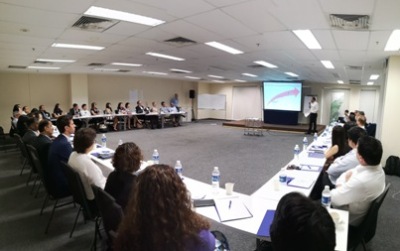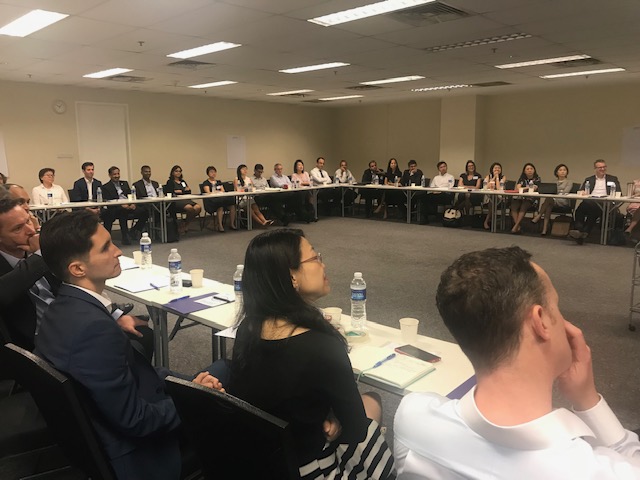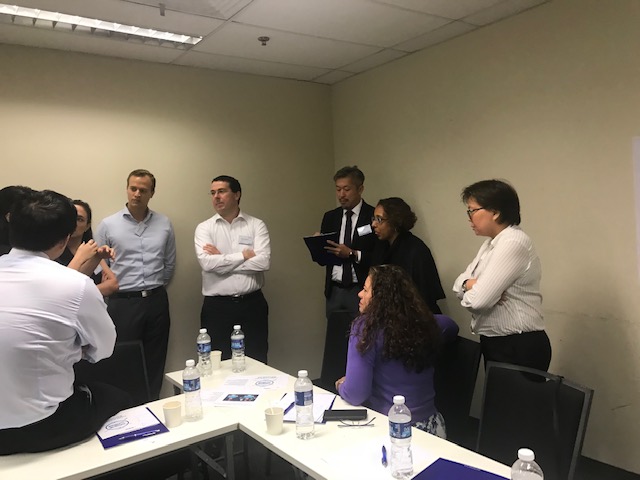 On 29th November, FP&A Trends Group held the Singapore FP&A Board Meeting. Over forty senior finance practitioners discussed the challenges, trends and shared best practices in the FP&A field.
On 29th November, FP&A Trends Group held the Singapore FP&A Board Meeting. Over forty senior finance practitioners discussed the challenges, trends and shared best practices in the FP&A field.
Among many areas, the one that attracted most attention were focused on the transformation of the FP&A function by new technologies such as Artificial Intelligence, Machine Learning, Big Data and the composition and skills set of the FP&A Teams of the future.
The Board consisted of top finance executives, CFOs, Senior Finance and FP&A Directors representing global MNC including Mondelez International, Medtronic, Bayer, Avon, JLL, IBM, Johnson & Johnson, Marriott, Hilton and APAC leaders such as Marina Bay Sands, Grab, Starhub, Singtel, PropertyGuru.
Takeaways
The ideal FP&A professional has many names...
- the Architect - able to develop the right analytical approach for the organisation,
- the Analyst - that can dig through a lot of data and draw meaningful conclusions,
- the Storyteller, who sees the big picture and can quantify the plans and
- the Influencer, able to spawn interest and traction of the provided insights.
Nonetheless, there is a circle around all four characteristics with one underlying denominator, the business. Now, the weight for supporting the commercial teams is bigger than ever.

The members were also introduced to best practices case study about the transformation of FP&A function shared by Avon FP&A Director Arvind Ramaswami.
After the discussion and case study, the FP&A Board members shared views and outlined key insights on the FP&A future trends in the following areas.
Roles and responsibilities of FP&A in the future
Future FP&A objectives are expected to remain mostly unchanged from current objectives. Implementation of new tools, enrolment of new team members, development of new skills sets that is inevitably coming in near future will increase utility, while FP&A teams will continuously follow the same objectives, such as the accuracy of the forecasts, understanding the value drivers and advising businesses on the best value generation strategies.
The responsibilities that come with the above will require increased cooperation between FP&A teams and other stakeholders. The right attitude of “I want to be here” rather than “I need to be here” is the guarantee of better insight and better collaboration within the organization.

What would be the impact of Artificial Intelligence and Machine Learning on FP&A Teams
Currently, the technologies are changing every aspect of our private and professional life’s. Multiple technology companies are founded, heavy funding supports its development and there is no turning back on it. This trend will have a great impact on FP&A profession as well.
Looking at the big picture, FP&A Board agreed that Artificial Intelligence (AI) is not a threat to the existence of FP&A profession. AI is perceived as another tool that makes the work more efficient and more accurate. Yet, the Board sees the challenges to adopt new technologies while remaining the FP&A team’s structure unchanged and underlines the need for acquisition of new skills by team members and amending job description of the current positions to implement and fully utilize the power of new technologies. The “New Collar” jobs will require knowledge of Big Data, AI, Machine Learning (ML), Finance and deep business understanding.
As AI needs training, ML requires calibration, the introduction of the new technologies will require a bridging period. In the Board’s opinion, the FP&A teams should not rush in and gradually include new technologies over 3-5 years, making sure they provide better results than solutions currently in place.
Embedded System People in FP&A
The impact of technologies on the teams is the derivative of the business model, organization size and structure. The Board agreed that current FP&A team’s structure and skills sets of its members need adjustments to properly address the challenges. Enrolling data scientists or external consultants is necessary. The external consultants’ role will mostly focus on recommendation and implementation of the most suitable up-to-date technology. Internal data scientists’ roles will focus mostly on maintaining functioning of the system on its top capacity.
The change always comes with reorganization of the status quo, thus strong leadership will be very much required. Understanding the objectives, setting the goals, agreeing on the best approach by all parties involved (business, finance and IT) will make the change beneficial for the organization.
Essential skills set for FP&A Team
The Board also addressed essential skills set for FP&A professional of the future. It includes analytical mind, commercial acumen and collaborative orientation.
As new technologies will bring more analytical capacity to the teams, they will decrease the weight from analysis scope and shift focus towards an understanding of the business and providing guidance on most appropriate scope for investigation for data scientists. Thus, it was agreed that business professionals would be a good addition to the FP&A teams. One of the proposed solutions included rotation, between FP&A and business units, so that the business intuition and understanding can be further developed and supplement the raw analytical output provided by new technologies.

Summary
Official discussions were followed by a networking mixer, wherein a private atmosphere more cases and strategies were discussed, relationships established and career opportunities arose.
In the rapid corporate pace with so many different possible paths and challenges, it was a truly refreshing feeling, when forty heads of finance have one vision and the multiple possibilities in the future, are limited to a single path, with outlined advantages and challenges in the plan. I think that is the essence of FP&A.
The meeting was sponsored by Apliqo and Michael Page.




